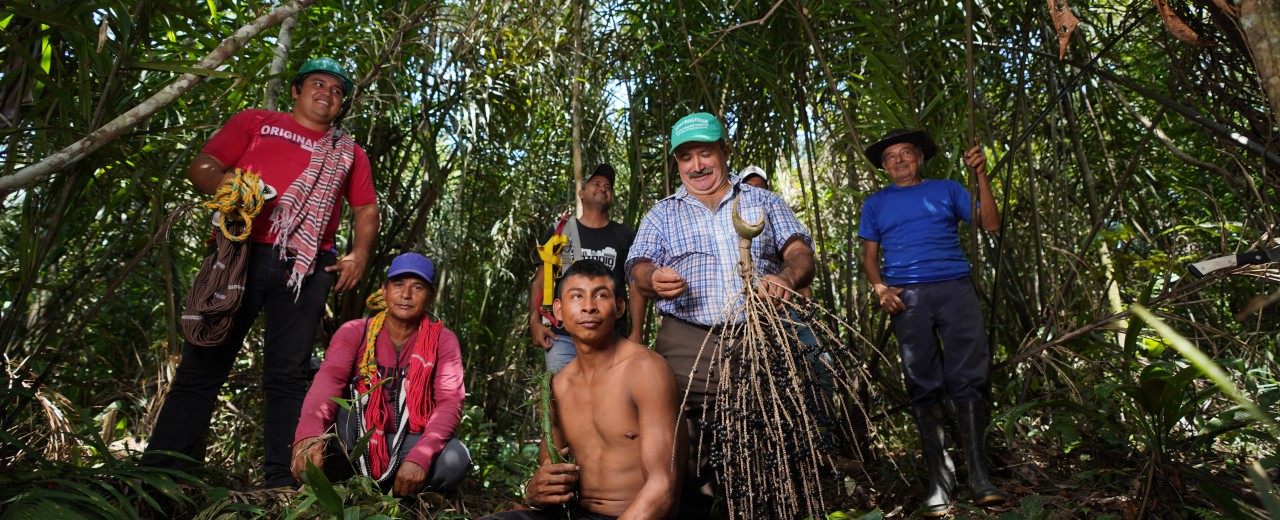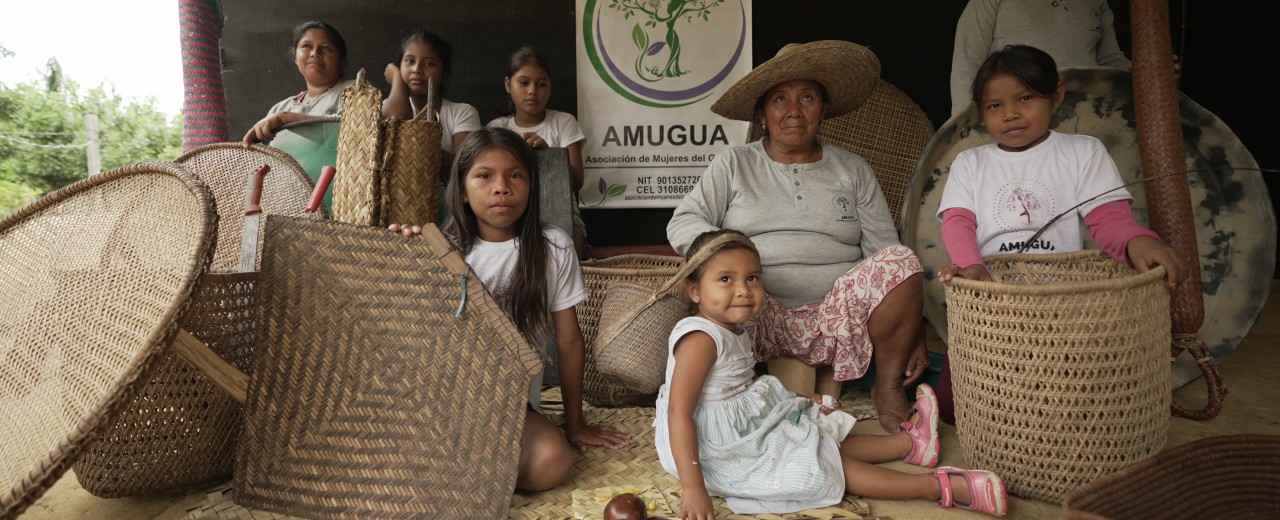
The vast rainforests in southeastern Colombia are among the most species-rich in the world. At the same time, the Amazon forest plays a vital role in climate change mitigation. It is vital for maintaining the world’s carbon balance, water cycle and radiation balance. But it has been shrinking for decades.
The peace process in Colombia has of course been greatly welcomed, but it initially went hand in hand with a significant increase in deforestation. The withdrawal of the armed groups created a power vacuum that the state was unable to fill. As a result, the local populations began to expand agricultural land and, in particular, to create new cattle pastures – and this involved mass deforestation.
However, the Colombian government is committed to reducing deforestation in the Amazon region and is indeed currently reporting great successes in this area. Deforestation has now fallen to a historic low and the aim is to stop it completely by 2030. To this end, Colombia receives support through a complex mechanism created in 2005 under the United Nations. Under the name REDD+ (Reducing emissions from deforestation and forest degradation in developing countries), funds are provided when there has been a reduction in deforestation. This serves as a huge incentive to protect forests, which act as vital carbon sinks. The “+” in REDD+ stands for additional activities to protect the climate, such as the sustainable management of forests.
In line with REDD+, the Federal Ministry for Economic Cooperation and Development (BMZ) launched the REDD Early Movers (REM) programme in 2011. This rewards forest conservation pioneers who have already met certain prerequisites for participation in the REDD+ mechanism, such as the establishment of a forest monitoring system, through performance-based payments. And Colombia is one of these pioneers. As part of the REM programme, Colombia has significantly expanded the protection of its forest areas.
The REM process provides for payments for proven successes: if the Colombian state is able to prove that it has prevented deforestation, it receives funding. The Ministry of the Environment is the project sponsor. Around 65% of the funds from the REM process go towards supporting the local population, while the remainder finance institutional consolidation of environmental authorities for important tasks such as forest monitoring and deforestation monitoring. “This is a transparent process that seems to be working well”, says Eckart von Reitzenstein, who supports the project as a technical expert at KfW. The Visión Amazonía initiative, anchored in the Ministry of the Environment, was founded to implement the project. It concludes nature conservation agreements with local communities and supports the sustainable use of natural resources. To date, more than 300,000 hectares of land have been placed under conservation.

The REM funds help generate more income in villages: cocoa farmers receive advice on cultivation methods and fertilisation, helping them to generate larger harvests. Management plans for newly created forest development zones specify in detail the quantities of wood that can be sustainably extracted. In Colombia, land use plans have been established for more than 1.1 million hectares of forest to date. Sustainable forest management plans have been drawn up for individual municipal forests. The certification process is now underway in accordance with the strict environmental and social standards of the Forest Stewardship Council (FSC). In order to further increase the value of the wood, there are plans to build a sawmill. Sawn timber sells for higher prices than round timber – and so the sawmill is set to help further increase income in the region. Other local produce, such as the acaí berry, which is widely regarded as a superfood, is also being sold in increasing quantities. Around 25,500 indigenous families, more than 12,200 farming families and 72 projects run by women have so far benefited from the projects implemented by the Visión Amazonía initiative.
In order to be able to disburse REM funds, the extent of deforestation must be measured. This is done using satellite images that show the types of vegetation on the Earth’s surface, such as forests, pastures and vegetable cultivation. These images are used to determine the extent of the deforestation and the payments for deforestation prevention. Around 35% of the REM funds are used to finance this satellite monitoring and the necessary analysis capacities: these funds do not go to the local communities, but instead remain with the Colombian Ministry of the Environment. In addition, a national register of greenhouse gas emissions is being established in the form of an online database that records all transactions.
The first phase of the project was concluded in 2024. Germany, Norway and the United Kingdom have jointly disbursed around USD 87 million to Colombia during this phase for emission reductions of approximately 17.5 million tonnes of carbon dioxide equivalents arising from prevented deforestation (USD 5 per tonne). The second phase with grants from the Federal Ministry for Economic Cooperation and Development (BMZ) (up to EUR 20 million) and Norway (around EUR 14 million) has been in implementation since 2023.
“The REM programme is much discussed in Colombia and people are very proud of it”, said KfW expert Eckart von Reitzenstein during a visit to Bogotá. “The programme is of great environmental significance in the country.” Its implementation is a clear demonstration of how the REM mechanism can contribute to forest protection and climate change mitigation.
Share page
To share the content of this page with your network, click on one of the icons below.
Note on data protection: When you share content, your personal data is transferred to the selected network.
Data protection
Alternatively, you can also copy the short link: https://www.kfw-entwicklungsbank.de/s/enzB2fQu
Copy link Link copied